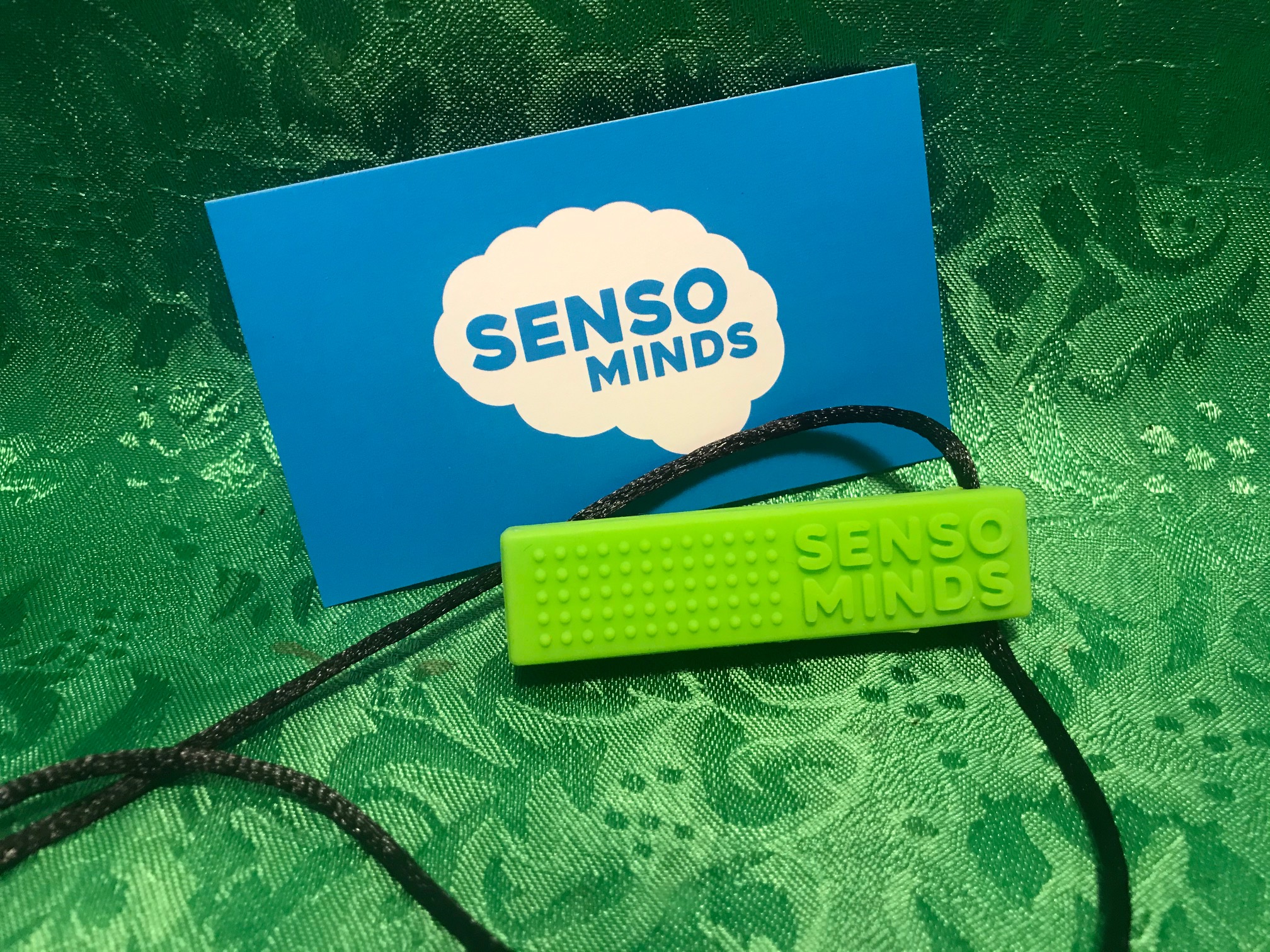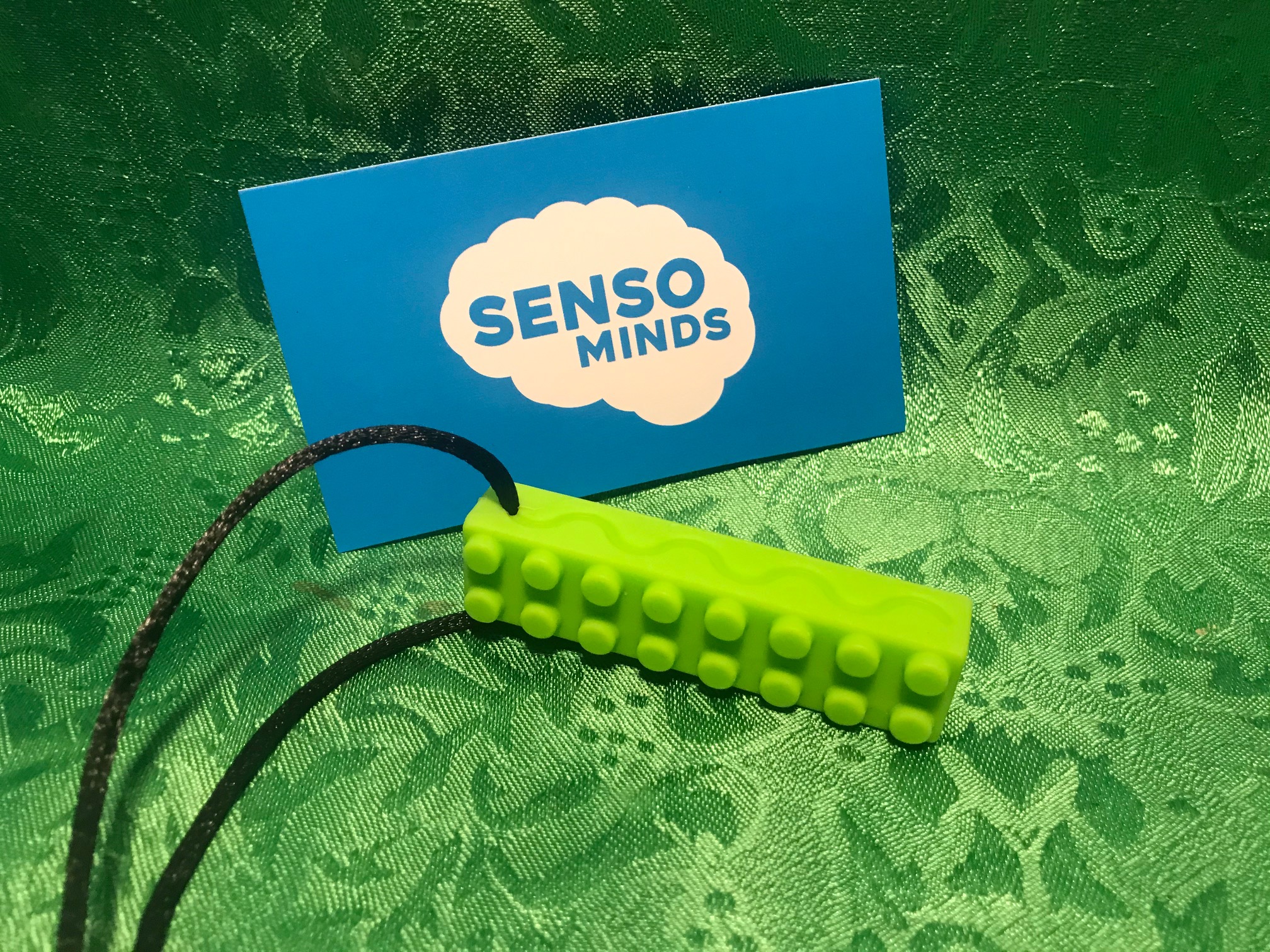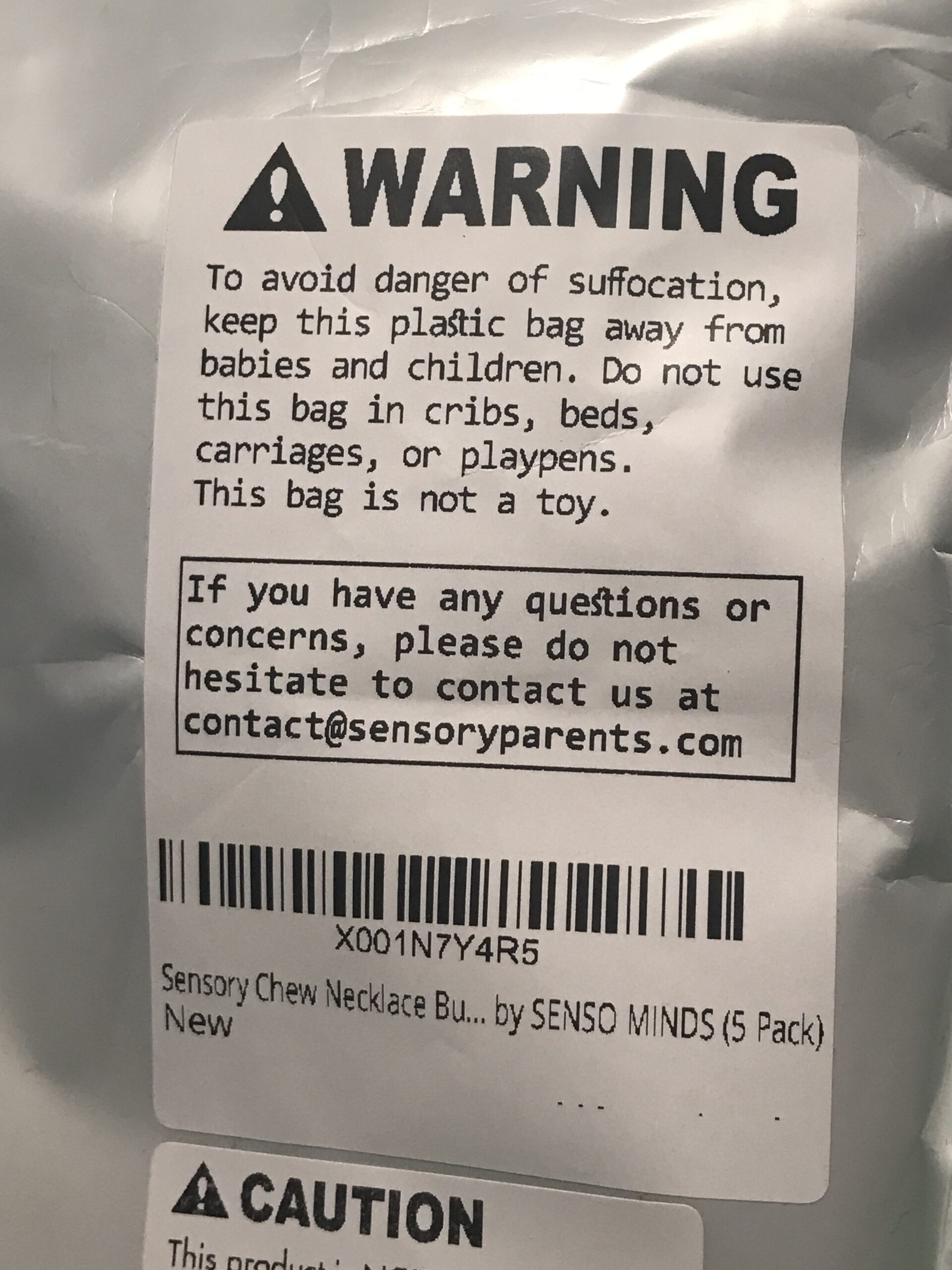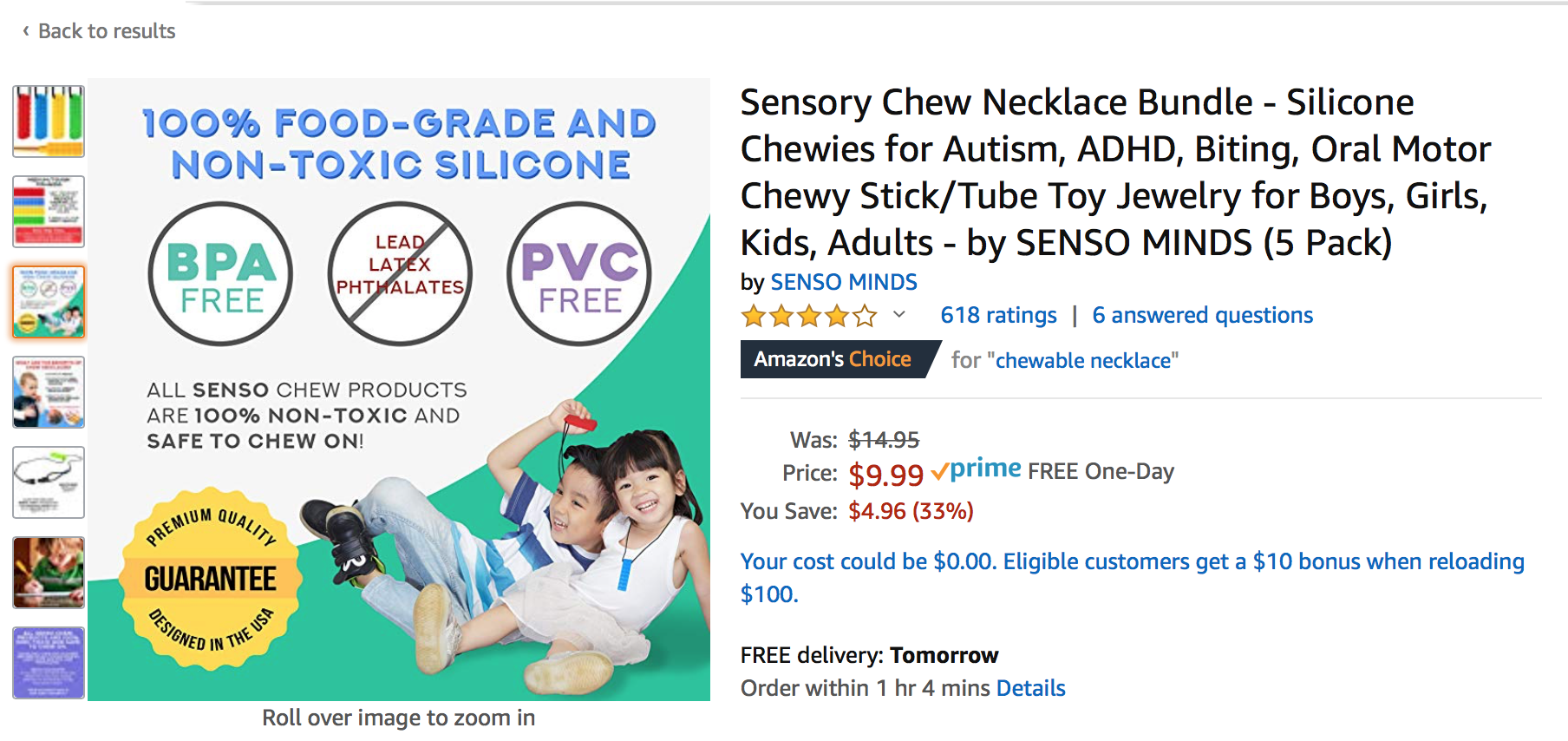Senso Minds “Non-Toxic” green silicone chew necklace — Lego shape: 12 +/- 3 ppm Cadmium (a known carcinogen)
For those new to this website:
Tamara Rubin is a multiple-federal-award-winning independent advocate for childhood Lead poisoning prevention and consumer goods safety, and a documentary filmmaker. She is also a mother of Lead-poisoned children (two of her sons were acutely Lead-poisoned in 2005). Since 2009, Tamara has been using XRF technology (a scientific method used by the U.S. Consumer Product Safety Commission) to test consumer goods for toxicants (specifically heavy metals — including Lead, Cadmium, Mercury, Antimony, and Arsenic). All test results reported on this website are science-based, accurate, and replicable. Items are tested multiple times to confirm the test results for each component tested. Tamara’s work was featured in Consumer Reports Magazine in February of 2023 (March 2023 print edition).
Published: Sunday, March 22, 2020
Green sensory silicone chew necklace
The full XRF test results of the green Lego-style silicone necklace by Senso Minds pictured are below (so please scroll down). Here are links to some additional reading that may be of interest, based on your interest in the test results of this item:
- Click here to see more silicone items we have tested.
- Click here to see more silicone items we have tested that have also been positive for trace levels of Cadmium.
- Click here to see more plastic toys Lead Safe Mama has tested.
- Click here to see more costume jewelry items we have tested.
How much Cadmium is “too much” Cadmium?
The allowable amount of Cadmium (total Cadmium content as detectable with a high-precision XRF instrument) is 40 ppm max in the State of Washington (and 75 ppm max in Denmark). With the exception of metal jewelry made for use by children (necklaces, rings, earrings), there is no United States federal standard limiting total Cadmium content (as detectable with an XRF instrument) in other items intended for use by children. As a result, items that test positive for Cadmium at the levels found in these necklaces are considered to be “safe by all standards” (read more on that below).
But these are meant to be chewed on — like food…
Additionally, while the limits (mentioned above) are for toys and other similar consumer goods, these necklaces are intended to be chewed on, and given that is the express intention and design of the product, it is my opinion that the regulatory limits set for toxicants found in products like this should be as low as (or lower than) the regulatory limits for toxicants found in foods. Generally, most metals are considered toxic in food in the 1 to 100 “parts per billion” range. There are 1,000 ppb in 1 ppm — so 12 ppm is 12,000 ppb Cadmium in this chew necklace sold for use by children!
“Safe by all standards…”
The amount of Cadmium found in these necklaces is therefore considered to be “safe by all [current regulatory] standards” — mostly because, in my opinion, there really are not yet any relevant or appropriate standards (something that would regulate toys intended to go in the mouth to the same regulatory standards for food). That said, I personally do not think there should be ANY allowable Cadmium in items intended for use by children because Cadmium is a known carcinogen — and there is no insurmountable manufacturing or marketing consideration that can legitimately justify the use of Cadmium (or Cadmium-containing substrates or pigments) in any children’s item (especially given that many young kids often display an observably irresistible tendency to regularly stick such items in their mouth, and even frequently suck or chew on them — even items not designed to be chewed)!
To be fair, one could also argue the opposite:
One could also easily argue that even if chunks of this toy were swallowed, as silicone does chip with use (particularly if a kid is going to be chewing on it a bunch!) — which anyone familiar with owning a silicone spatula over many years will be able to attest to — any Cadmium content would not likely be as bioavailable as it might be if it were present in food.
Again, however: I am fairly certain that hypothesis (i.e. that “a kid’s chewing on a silicone block containing “low” levels of Cadmium — even with some likely small degree of possible ingestion — carries no long-term negative health risk”) hasn’t yet actually been tested in any studies and for this website, I operate on two basic principals:
- Just because it hasn’t been studied doesn’t mean it is safe.
- Parents have a right to know what’s in the stuff they give their kids so they can make their own informed choices, regardless of whether or not some particular instance of a concern has been studied to the degree that might be necessary to determine the potential human impact of a certain thing (or type of thing) testing positive for one or more toxicants.
- And if there is a #3: If we can eliminate confirmed or potential sources of toxicants from the lives of our children, why wouldn’t we? #KnowBetterDoBetter
Stay Safe out There!
A quick note from Tamara
Hey readers – I hope you are staying well out there with all that is going on in the world right now. I’m hanging out mostly at home with my children and have been doing so for about 10 days now. I pulled them out of school over a week ago — just to be safe. Each of my three youngest sons have compromised immune systems (which manifests in different ways for each of them), due to having been Lead-poisoned as babies.
In between kid-wrangling, I am working hard to publish literally HUNDREDS of new articles and posts (with test results for various consumer goods I have tested over the past couple of years, but have not yet had a moment to report on!). These pieces have created a backlog in my system for more than a year now — and it’s actually nice to have a *break* with some time to catch up! To make this happen as quickly as possible, I am (as with this piece) simply publishing the images and the test results without a lot of additional information. (Do not worry — I will continue to update them with more information as I get caught up and begin to have the time!)
For those new to my website, please check out the menu in the header of the website for more information about how I test things (and my background, etc.). On each post, you can also click on any of the keyword tabs at the top of the piece to find more items in that category. Here’s the article discussing the type of testing I do, and the specific instrument I use to detect, analyze, and confirm metals content — ultimately producing the resultant data for each item reported here (link).
Please note: Test results reported below are science-based, accurate, and replicable. Test results reported here are from tests that were conducted for a minimum of 60 seconds each, and repeated multiple times to confirm the results. As with all the testing reported here on the website, we used a freshly-calibrated high-precision XRF instrument testing in Consumer Goods mode to test the item pictured here.
As always, please let me know if you have any questions.
Thank you for reading and for sharing these results!
Tamara Rubin
#LeadSafeMama
Test results for the green necklace chew toy pictured on this post:
120-second reading
- Cadmium (Cd): 12 +/- 3 ppm
- Silver (Ag): 6 +/- 3 ppm
- Indium (In): 11 +/- 5 ppm
- Vanadium (V): 41 +/- 17 ppm
- Titanium (Ti): 335 +/- 36 ppm
~ End ~
Scroll down for additional photos of this item.


Never Miss an Important Article Again!
Join our Email List

















